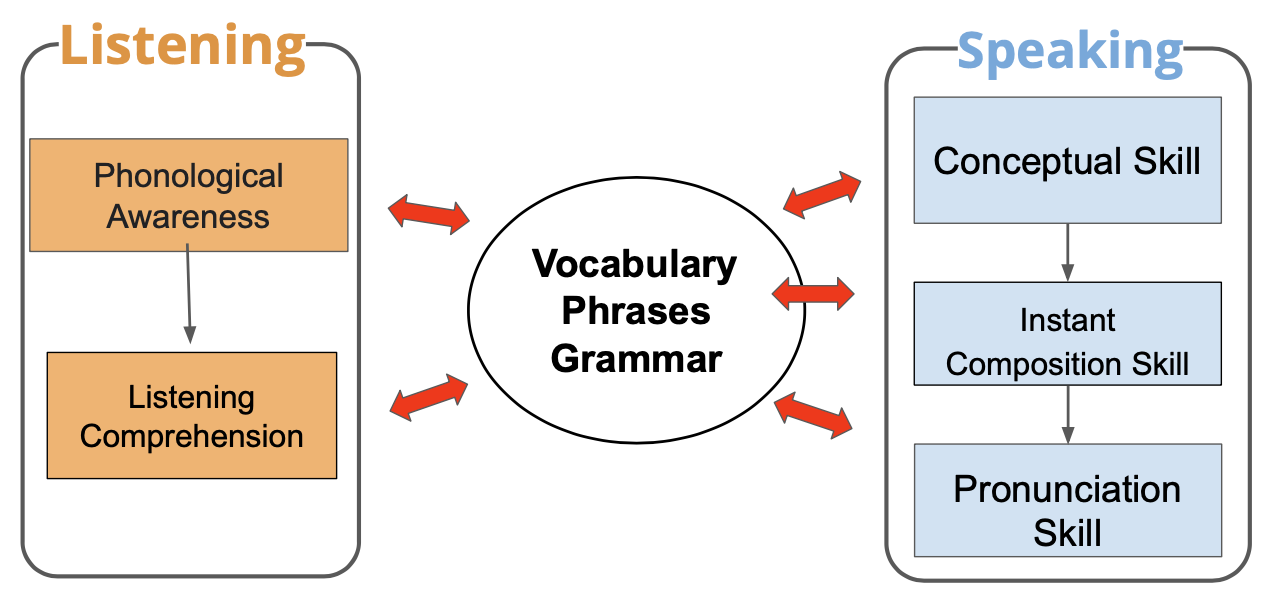
The Second Language Acquisition Theory
The Second Language Acquisition Theory is a scientific study of the mechanisms and processes by which humans acquire a language other than their native tongue, based on the results of research in neuroscience, psychology, linguistics, and other fields.
It is said that "a large amount of input + a small amount of output" is the most effective way to acquire a second language, and that it takes at least 2000 hours of input, including basic grammar and vocabulary learning, to become fluent.
The table above summarizes the skills that are essential in second language acquisition and how to train them.
Listening ability begins with being able to recognize speech sounds. Among the many methods, such as listening to Japanese songs and watching Japanese dramas, data shows that “shadowing” is the most effective way to learn. To shadow, you should repeat back the Japanese you are hearing as if you are a “shadow”.
Another way to improve your listening comprehension is actually by reading Japanese books and other media. Practice reading in your head and also reading the words out loud. Reading and listening skills interact with each other.
Speaking ability consists of three main skills: Conceptual skill, instant composition skill, and pronunciation skill. Conceptual skill is the ability to organize one's opinions and thoughts in one's mind. In an actual conversation, when you are asked a question, instead of rushing to give an answer immediately, you should organize what you want to say in your mind before you say it so that you can express your opinion smoothly. This can be practiced by writing essays and diaries in Japanese.
Instant composition skill is the ability to convert the conceptualized content into Japanese. This can be developed through instant Japanese composition training. Instant Japanese composition training is "reading (or listening to) a short English sentence and then quickly translating it into Japanese”. By doing this, you can increase the speed at which your brain can create Japanese. However, instant Japanese composition is for beginners or intermediate learners. When you are used to Japanese conversation to a certain extent, you should start to conceptualize in Japanese and then create sentences in Japanese, which is called "Japanese brain”.
Finally, there are many sounds in Japanese that are not found in English, so it is difficult to understand the sounds in Japanese and produce them in real life. However, just like speech recognition, pronunciation skills can also be developed through shadowing.
The skills of speaking, listening, reading, and writing are all connected. In order to be able to speak Japanese, you need to build up your basic foundation and develop these skills.
We will help you develop these skills through learning quests and online activities.
